
Istanbul
Istanbul (İstanbul ), formerly known as Byzantium and Constantinople, is the most populous city in Turkey and the country's economic, cultural and historic center. Istanbul is a transcontinental city in Eurasia, straddling the Bosporus strait (which separates Europe and Asia) between the Sea of Marmara and the Black Sea. Its commercial and historical center lies on the European side and about a third of its population lives in suburbs on the Asian side of the Bosporus. With a total population of around 15 million residents in its metropolitan area, the city grew in size and influence, becoming one of the most important cities in history. After its reestablishment as Constantinople in 330 CE, it served as an imperial capital for almost 16 centuries, during the Roman/Byzantine (330–1204), Latin (1204–1261), Palaiologos Byzantine (1261–1453) and Ottoman (1453–1922) empires. It was instrumental in the advancement of Christianity during Roman and Byzantine times, before the Ottomans conquered the city in 1453 CE and transformed it into an Islamic stronghold and the seat of the Ottoman Caliphate. Under the name Constantinople it was the Ottoman capital until 1923. The capital was then moved to Ankara and the city was renamed Istanbul. The city held the strategic position between the Black Sea and the Mediterranean. It was also on the historic Silk Road. It controlled rail networks between the Balkans and the Middle East, and was the only sea route between the Black Sea and the Mediterranean. In 1923, after the Turkish War of Independence, Ankara was chosen as the new Turkish capital, and the city's name was changed to Istanbul. Nevertheless, the city maintained its prominence in geopolitical and cultural affairs. The population of the city has increased tenfold since the 1950s, as migrants from across Anatolia have moved in and city limits have expanded to accommodate them. Arts, music, film, and cultural festivals were established towards the end of the 20th century and continue to be hosted by the city today. Infrastructure improvements have produced a complex transportation network in the city. Over foreign visitors came to Istanbul in 2015, five years after it was named a European Capital of Culture, making the city the world's fifth most popular tourist destination. The city's biggest attraction is its historic center, partially listed as a UNESCO World Heritage Site, and its cultural and entertainment hub is across the city's natural harbor, the Golden Horn, in the Beyoğlu district. Considered a global city, It hosts the headquarters of many Turkish companies and media outlets and accounts for more than a quarter of the country's gross domestic product. Hoping to capitalize on its revitalization and rapid expansion, Istanbul has bid for the Summer Olympics five times in twenty years.
See all
0
0
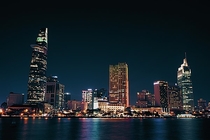
Ho Chi Minh City
Ho Chi Minh City (Northern Southern ), formerly (and still commonly) known as Saigon (Northern Southern ), is the largest city in Vietnam, with a population of around 9 million in 2019. It is known for its well-preserved French colonial architecture and vibrant street life. Its varied cultural institutions, which include historic landmarks, walking streets, museums and galleries, attracts over 8 million international visitors each year. Ho Chi Minh City is a major centre for finance, media, technology, education, and transportation. The city generates nearly a quarter of the country's total GDP, and is home to many multinational companies. Tan Son Nhat International Airport, the main airport serving the city, is the busiest airport in the country by passenger traffic, accounting for nearly half of all international arrivals to Vietnam. Ho Chi Minh City has a Human Development Index of 0.795 (high), ranking second among all municipalities and provinces of Vietnam.
See all
0
0

Barcelona
Barcelona is a city on the coast of northeastern Spain. It is the capital and largest city of the autonomous community of Catalonia, as well as the second most populous municipality of Spain. With a population of 1.6 million within city limits, its urban area extends to numerous neighbouring municipalities within the Province of Barcelona and is home to around 4.8 million people, It is a major cultural and economic centre in southwestern Europe, 24th in the world (before Zürich, after Frankfurt) and a financial centre. In 2008 it was the fourth most economically powerful city by GDP in the European Union and 35th in the world with GDP amounting to €177 billion. It is the main biotech hub in Spain. In 2012 Barcelona had a GDP of $170 billion; and it was leading Spain in employment rate in that moment. In 2009 the city was ranked Europe's third and one of the world's most successful as a city brand. In the same year the city was ranked Europe's fourth best city for business and fastest improving European city, with growth improved by 17% per year, and the city has been experiencing strong and renewed growth for the past three years. Barcelona is also the home of one of the world's most famous football clubs, FC Barcelona. Since 2011 Barcelona has been a leading smart city in Europe. Barcelona is a transport hub, with the Port of Barcelona being one of Europe's principal seaports and busiest European passenger port, an international airport, Barcelona–El Prat Airport, which handles over 50 million passengers per year, an extensive motorway network, and a high-speed rail line with a link to France and the rest of Europe.
See all
0
0
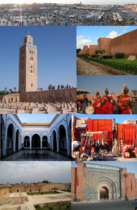
Marrakesh
Marrakesh or Marrakech (or مراكش, ⵎⵕⵕⴰⴽⵛ) is the fourth largest city in the Kingdom of Morocco. It is one of the four Imperial cities of Morocco and is the capital of the Marrakesh-Safi region. The city is situated west of the foothills of the Atlas Mountains. Marrakesh is southwest of Tangier, southwest of the Moroccan capital of Rabat, south of Casablanca, and northeast of Agadir. The region has been inhabited by Berber farmers since Neolithic times. The city was founded in 1070 by Emir Abu Bakr ibn Umar as the imperial capital of the Almoravid Empire. The Almoravids established the first major structures in the city and shaped its layout for centuries to come. The red walls of the city, built by Ali ibn Yusuf in 1122–1123, and various buildings constructed in red sandstone afterwards, have given the city the nickname of the "Red City" (المدينة الحمراء Almadinat alhamra') or "Ochre City" (ville ocre). Marrakesh grew rapidly and established itself as a cultural, religious, and trading center for the Maghreb and sub-Saharan Africa. Jemaa el-Fnaa is the busiest square in Africa. After a period of decline, the city was surpassed by Fez, and in the early 16th century, Marrakesh again became the capital of the kingdom. The city regained its preeminence under wealthy Saadian sultans Abdallah al-Ghalib and Ahmad al-Mansur, who embellished the city with sumptuous palaces such as the El Badi Palace (1578) and restored many ruined monuments. Beginning in the 17th century, the city became popular among Sufi pilgrims for its seven patron saints who are entombed here. In 1912 the French Protectorate in Morocco was established and T'hami El Glaoui became Pasha of Marrakesh and held this position nearly throughout the protectorate until the role was dissolved upon the independence of Morocco and the reestablishment of the monarchy in 1956. Marrakesh comprises an old fortified city packed with vendors and their stalls. This medina quarter is a UNESCO World Heritage Site. Today it is one of the busiest cities in Africa and serves as a major economic center and tourist destination. Real estate and hotel development in Marrakesh have grown dramatically in the 21st century. Marrakesh is particularly popular with the French, and numerous French celebrities own property in the city. Marrakesh has the largest traditional market (souk) in Morocco, with some 18 souks selling wares ranging from traditional Berber carpets to modern consumer electronics. Crafts employ a significant percentage of the population, who primarily sell their products to tourists. Marrakesh is served by Ménara International Airport and by Marrakesh railway station, which connects the city to Casablanca and northern Morocco. Marrakesh has several universities and schools, including Cadi Ayyad University. A number of Moroccan football clubs are here, including Najm de Marrakech, KAC Marrakech, Mouloudia de Marrakech and Chez Ali Club de Marrakech. The Marrakesh Street Circuit hosts the World Touring Car Championship, Auto GP and FIA Formula Two Championship races.
See all
0
0
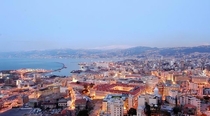
Beirut
Beirut is the capital and largest city of Lebanon. Greater Beirut has a population of 2.4 million, which makes it the third-largest city in the Levant region. The city is situated on a peninsula at the midpoint of Lebanon's Mediterranean coast. Beirut has been inhabited for more than 5,000 years, and was one of Phoenicia's most prominent city states, making it one of the oldest cities in the world (see Berytus). The first historical mention of Beirut is found in the Amarna letters from the New Kingdom of Egypt, which date to the 14th century BC. Beirut is Lebanon's seat of government and plays a central role in the Lebanese economy, with many banks and corporations based in the city. Beirut is an important seaport for the country and region, and rated a Beta + World City by the Globalization and World Cities Research Network. Beirut was severely damaged by the Lebanese Civil War and the massive explosion in the Port of Beirut. Its cultural landscape underwent major reconstruction.
See all
0
0
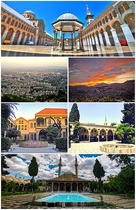
Damascus
Damascus (Arabic: ) is the capital of Syria, the oldest capital in the world and, according to some, the fourth holiest city in Islam. Colloquially known in Syria as and titled the "City of Jasmine" , Damascus is a major cultural center of the Levant and the Arab world. The city had an estimated population of 2,503,000 in 2022. In southwestern Syria, Damascus is the center of a large metropolitan area. Its population in 2004 was estimated to be 2.7 million people. Embedded on the eastern foothills of the Anti-Lebanon mountain range inland from the eastern shore of the Mediterranean on a plateau above sea level, Damascus experiences a dry climate because of the rain shadow effect. The Barada River flows through Damascus. Damascus is one of the oldest continuously inhabited cities in the world. First settled in the 3rd millennium BC, it was chosen as the capital of the Umayyad Caliphate from 661 to 750. After the victory of the Abbasid dynasty, the seat of Islamic power was moved to Baghdad. Damascus saw its importance decline throughout the Abbasid era, only to regain significant importance in the Ayyubid and Mamluk periods. Today, it is the seat of the central government of Syria. eight years into the Syrian Civil War, Damascus was named the least livable city out of 140 global cities in the Global Liveability Ranking.
See all
0
0
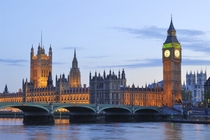
London
London is the capital and largest city of England and the United Kingdom. Standing on the River Thames in the south-east of England, at the head of its estuary leading to the North Sea, London has been a major settlement for two millennia. Londinium was founded by the Romans. The City of London, London's ancient core − an area of just and colloquially known as the Square Mile − retains boundaries that follow closely its medieval limits. The City of Westminster is also an Inner London borough holding city status. Greater London is governed by the Mayor of London and the London Assembly. London is considered to be one of the world's most important global cities and has been termed the world's most powerful, most desirable, most influential, most visited, most expensive, innovative, sustainable, most investment friendly, and most popular for work city in the world. London exerts a considerable impact upon the arts, commerce, education, entertainment, fashion, finance, healthcare, media, professional services, research and development, tourism and transportation. London ranks 26 out of 300 major cities for economic performance. It is one of the largest financial centres and has either the fifth or sixth largest metropolitan area GDP. It is the most-visited city as measured by international arrivals and has the busiest city airport system as measured by passenger traffic. It is the leading investment destination, hosting more international retailers and ultra high-net-worth individuals than any other city. London's universities form the largest concentration of higher education institutes in Europe, and is home of world-class institutions such as Imperial College London in science, technology, engineering, and mathematics and the London School of Economics in economics, finance, and business. In 2012, London became the first city to have hosted three modern Summer Olympic Games. London has a diverse range of people and cultures, and more than 300 languages are spoken in the region. Its estimated mid-2018 municipal population (corresponding to Greater London) was 8,908,081, the most populous of any city in the European Union and accounting for 13.4% of the UK population. London's urban area is the second most populous in the EU, after Paris, with 9,787,426 inhabitants at the 2011 census. The population within the London commuter belt is the most populous in the EU with 14,040,163 inhabitants in 2016. London was the world's most populous city from 1831 to 1925. London contains four World Heritage Sites: the Tower of London; Kew Gardens; the site comprising the Palace of Westminster, Westminster Abbey, and St Margaret's Church; and the historic settlement in Greenwich where the Royal Observatory, Greenwich defines the Prime Meridian, 0° longitude, and Greenwich Mean Time. Other landmarks include Buckingham Palace, the London Eye, Piccadilly Circus, St Paul's Cathedral, Tower Bridge, Trafalgar Square and The Shard. London has numerous museums, galleries, libraries and sporting events. These include the British Museum, National Gallery, Natural History Museum, Tate Modern, British Library and West End theatres. The London Underground is the oldest underground railway network in the world.
See all
0
0
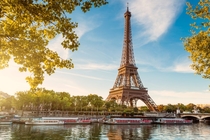
Paris
Paris is the capital and most populous city of France, with an area of and an official estimated population of 2,140,526 residents as of 1 January 2019. According to the Economist Intelligence Unit Worldwide Cost of Living Survey in 2018, Paris was the second most expensive city in the world, after Singapore, and ahead of Zürich, Hong Kong, Oslo and Geneva. Another source ranked Paris as most expensive, on a par with Singapore and Hong Kong, in 2018. The city is a major railway, highway, and air-transport hub served by two international airports: Paris-Charles de Gaulle (the second busiest airport in Europe) and Paris-Orly. Opened in 1900, the city's subway system, the Paris Métro, serves 5.23 million passengers daily, and is the second busiest metro system in Europe after Moscow Metro. Gare du Nord is the 24th busiest railway station in the world, but the first located outside Japan, with 262 million passengers in 2015. Paris is especially known for its museums and architectural landmarks: the Louvre was the most visited art museum in the world in 2018, with 10.2 million visitors. The Musée d'Orsay, Musée Marmottan Monet, and Musée de l'Orangerie are noted for their collections of French Impressionist art, the Pompidou Centre Musée National d'Art Moderne has the largest collection of modern and contemporary art in Europe, and the Musée Rodin and Musée Picasso exhibit the works of the two noted Parisians. The historical district along the Seine in the city centre is classified as a UNESCO Heritage Site, and popular landmarks in the city centre include the Cathedral of Notre Dame de Paris and the Gothic royal chapel of Sainte-Chapelle, both on the Île de la Cité; the Eiffel Tower, constructed for the Paris Universal Exposition of 1889; the Grand Palais and Petit Palais, built for the Paris Universal Exposition of 1900; the Arc de Triomphe on the Champs-Élysées, and the Basilica of Sacré-Coeur on the hill of Montmartre. Paris received 24.5 million visitors in 2018, measured by hotel stays, with the largest numbers of foreign visitors coming from the United States, the United Kingdom, Germany and China. It was ranked as the second most visited travel destination in the world in 2018, after Bangkok. The football club Paris Saint-Germain and the rugby union club Stade Français are based in Paris. The 80,000-seat Stade de France, built for the 1998 FIFA World Cup, is located just north of Paris in the neighbouring commune of Saint-Denis. Paris hosts the annual French Open Grand Slam tennis tournament on the red clay of Roland Garros. Paris hosted the Olympic Games in 1900, 1924 and will host the 2024 Summer Olympics. The 1938 and 1998 FIFA World Cups, the 2007 Rugby World Cup, and the 1960, 1984 and 2016 UEFA European Championships were also held in the city and, every July, the Tour de France bicycle race finishes there.
See all
0
0

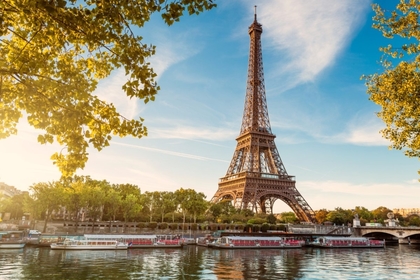





Comments